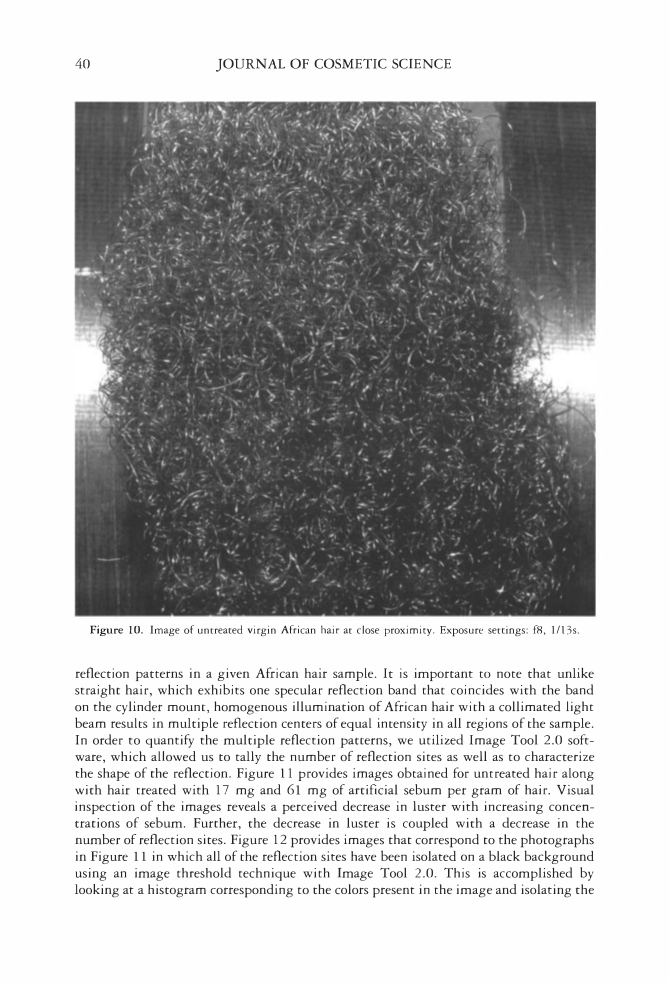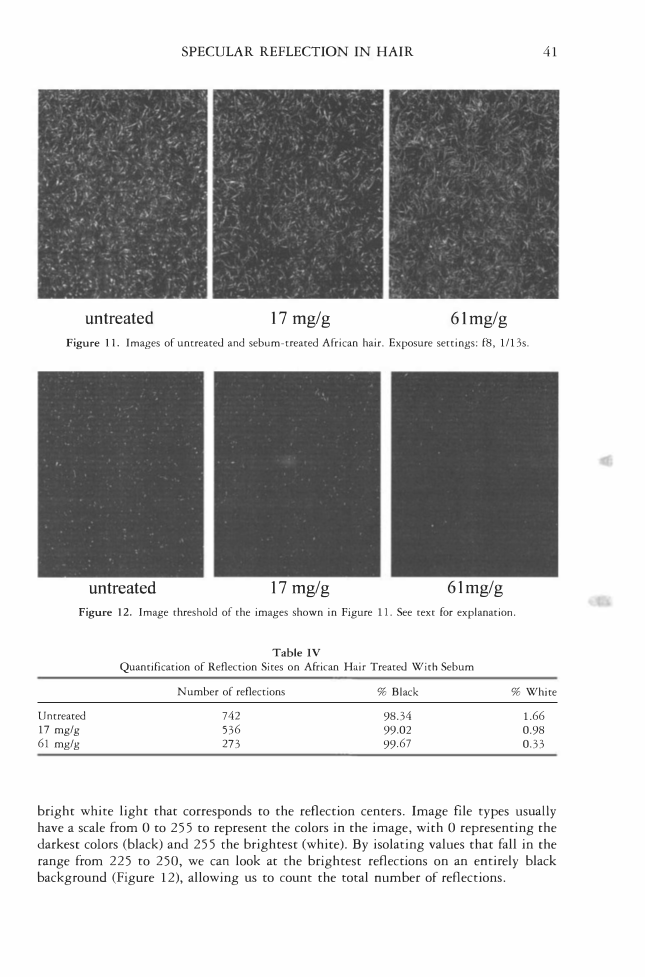40 JOURNAL OF COSMETIC SCIENCE Figure 10. Image of untreated virgin African hair at close proximity. Exposure settings: f8, 1/13s. reflection patterns in a given African hair sample. It is important to note that unlike straight hair, which exhibits one specular reflection band that coincides with the band on the cylinder mount, homogenous illumination of African hair with a collimated light beam results in multiple reflection centers of equal intensity in all regions of the sample. In order to quantify the multiple reflection patterns, we utilized Image Tool 2.0 soft ware, which allowed us to tally the number of reflection sites as well as to characterize the shape of the reflection. Figure 11 provides images obtained for uncreated hair along with hair treated with 17 mg and 61 mg of artificial sebum per gram of hair. Visual inspection of the images reveals a perceived decrease in luster with increasing concen trations of sebum. Further, the decrease in luster is coupled with a decrease in the number of reflection sites. Figure 12 provides images that correspond to the photographs in Figure 11 in which all of the reflection sites have been isolated on a black background using an image threshold technique with Image Tool 2.0. This is accomplished by looking at a histogram corresponding to the colors present in the image and isolating the
SPECULAR REFLECTION IN HAIR 41 untreated 17 mg/g 61mg/g Figure 11. Images of untreated and sebum-tteated African hair. Exposure settings: fS, 1/13s. untreated 17 mg/g 61mg/g Figure 12. Image threshold of the images shown in Figure 11. See text for explanation. Untreated 17 mg/g 61 mg/g Table IV Quantification of Reflection Sites on African Hair Treated With Sebum Number of reflections 742 536 273 % Black 98.34 99.02 99.67 % White 1.66 0.98 0.33 bright white light that corresponds to the reflection centers. Image file types usually have a scale from O to 25 5 to represent the colors in the image, with O representing the darkest colors (black) and 25 5 the brightest (white). By isolating values that fall in the range from 225 to 250, we can look at the brightest reflections on an entirely black background (Figure 12), allowing us to count the total number of reflections.
Purchased for the exclusive use of nofirst nolast (unknown) From: SCC Media Library & Resource Center (library.scconline.org)





































































































































